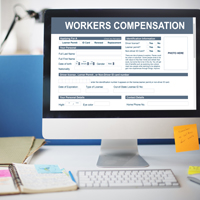High Hazard Workplaces
October 2, 2018 The Occupational Safety and Health Administration (OSHA) recently began employing “site-specific targeting” (SST) in certain workplaces across the country. SST works by directing OSHA’s resources to highly hazardous workplaces, where employees are more likely to experience illness, injury and/or death.
The Occupational Safety and Health Administration (OSHA) recently began employing “site-specific targeting” (SST) in certain workplaces across the country. SST works by directing OSHA’s resources to highly hazardous workplaces, where employees are more likely to experience illness, injury and/or death.
To determine which workplaces are the most hazardous, OSHA compiled occupational illness and injury data from tens of thousands of others. From this data, the administration identified 12,500 highly hazardous workplaces – or workplaces that experience the highest rate of illness, injury, and death.
While the majority of businesses experience 3.3 lost days from work for every 100 employees, high hazard workplaces experience 8 or more lost days from work per every 100 workers. As part of its SST program, OSHA notifies employers from high hazard businesses and urges them to take immediate action to limit preventable dangers for their workers.
Recognizable Workplace Hazards
According to OSHA, there are typically six main types of recognizable and common workplace hazards. They are:
- Chemicals and dust hazards: can include cleaning products, asbestos, combustible dusts, pesticides, etc.
- Biological hazards: such as bodily fluids and exposure to insect and/or animal bites, plants, viruses and bacteria, and more
- Safety hazards: like unguarded machinery, objects on the floor, unsecured scaffolding and ladders, insufficient logout/tagout procedures, and others
- Work organization hazards: often refer to workplace stressors, violence, harassment, and power dynamics
- Physical hazards: includes elemental (e.g. temperature, noise, sunlight) exposure, radiation, and more
- Ergonomic hazards: often brought about by physical tasks, like repetitive lifting, twisting, etc.
Workers across all different industries are exposed to a variety of hazards – which is why employers are legally responsible for providing safe working environments and conditions. Employers have to address all known and recognizable hazards, and also must have effective safety and health programs in place.
Certain events are more likely to result in injuries, such as:
- Slips, trips, and falls (these can be on the same or different levels, and can also result from poor housekeeping practices);
- Physical overexertion, such as repetitive motions, lifting, and lowering, and:
- Coming into contact with equipment and/or objects (which also includes struck by and crushing injuries)
Common Workplace Injuries
The Bureau of Labor Statistics (BLS) reported 5,190 fatal workplace injuries in 2016. When thousands of workers die annually, it means that 14 men and women die on the job every day. According to the National Safety Council (NSC), every 7 seconds a worker is injured. Altogether, approximately 4,500,000 workers are injured every year.
Some of the most common injuries that workers sustain are strains, sprains, cuts, punctures, and muscle tears. However, workers in high hazard workplaces can also experience:
- Broken bones;
- Traumatic brain injuries, concussions, etc.;
- Spine and neck injuries, and:
- Crushing injuries and amputations
Any kind of workplace injury can result in medical treatment, expenses, and missed time from work – if not worse. Workers in high hazard workplaces are even more susceptible to illness and injury, so it is especially critical for their employers to take comprehensive preventive steps to guard against these known dangers.
Sometimes, employers fail to prioritize worker health and safety. Not only is this wrong, but it can also be negligent – especially if a worker gets injured as a result. If you have questions about an injury that you or a loved one experienced in the workplace, please contact a representative at our firm directly.
Philadelphia Workers’ Compensation Lawyers at Galfand Berger, LLP Represent Individuals Injured at Work
If you were injured at work, please contact the Philadelphia workers’ compensation attorneys at Galfand Berger. With offices located in Philadelphia, Bethlehem, Lancaster, and Reading, we serve clients throughout Pennsylvania and New Jersey. To schedule a consultation, call us at 800-222-8792 or complete our online contact form.
 Google Screened
Google Screened
